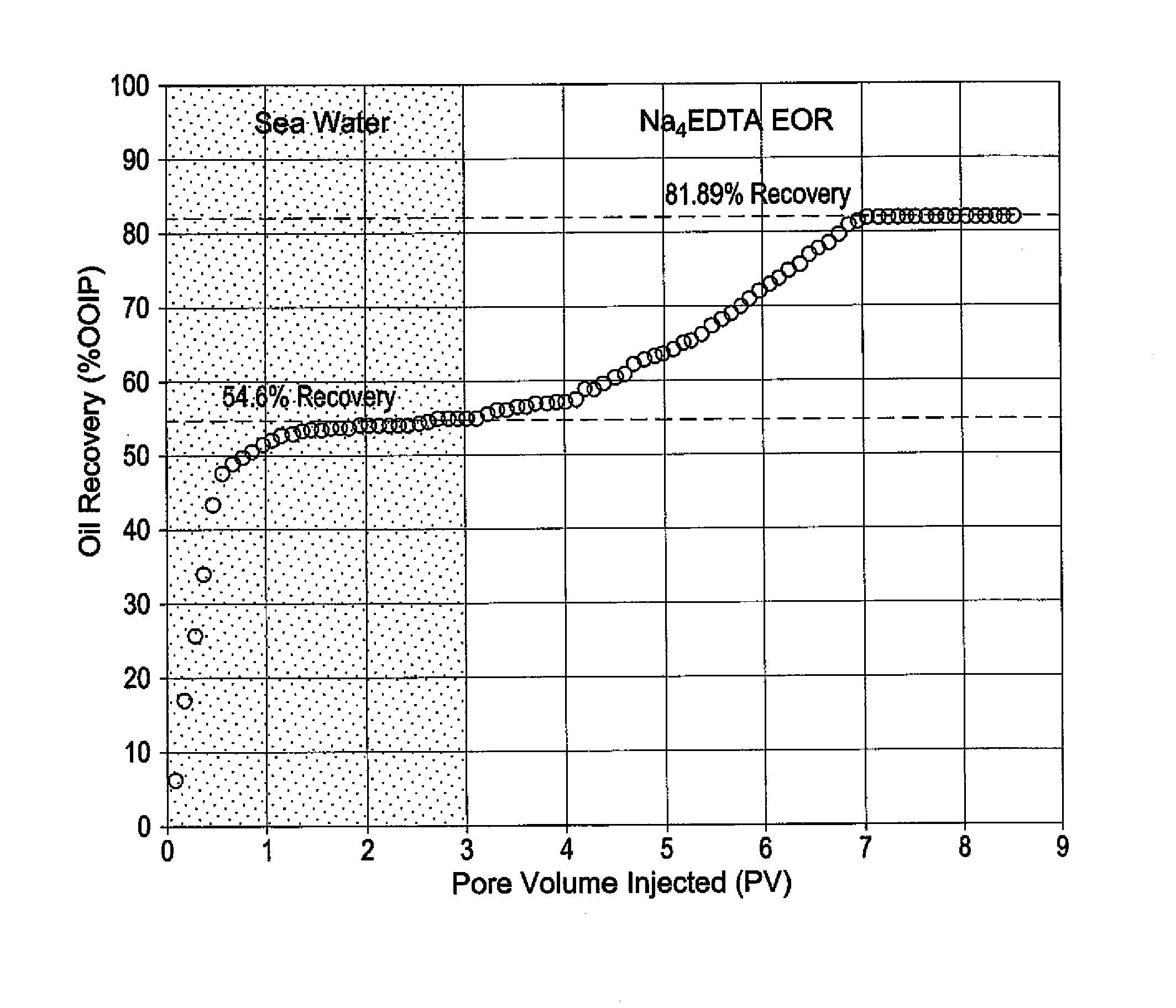Chelating fluid for enhanced oilrecovery in carbonate reservoirs and method of using the same
a carbonate oil and chelating fluid technology, applied in the direction of fluid removal, wellbore/well accessories, drilling composition, etc., can solve the problems of incompatibility between two types of water, formation damage in both injection and production wells, and scale problems are particularly prevalent, so as to enhance oil recovery and high salinity
- Summary
- Abstract
- Description
- Claims
- Application Information
AI Technical Summary
Benefits of technology
Problems solved by technology
Method used
Image
Examples
Embodiment Construction
[0013]As a control, untreated sea water with a high sulfate content was injected into a limestone core which was initially saturated with brine. The contents of the sea water and the connate water (water that is trapped in the pores of sedimentary rocks) are shown below in Table 1.
TABLE 1Composition of Connate Water and Formation BrineConnate WaterFormation Brine (i.e.,Ions(ppm)Seawater) (ppm)Sodium59,49118,300Calcium19,040650Magnesium2,4392,110Sulfate3504,290Chloride132,06032,200Bicarbonate354120TDS213,73457,670
[0014]Core flooding experiments were performed using limestone cores each having a diameter of 3.75 cm and lengths of 18.36 cm. The overall volume of each core sample was 202.92 cm3 with a pore volume of 40.69 cm3, resulting in a porosity of 20.05%. The density of each core sample was 2.67 gm / cm3, and each had a permeability of 8.29 mD. In the experiments, the initial water saturation Swi was 32.42% with an original oil in place (OOIP) of 27.50%.
[0015]The core samples were p...
PUM
| Property | Measurement | Unit |
|---|---|---|
| temperature | aaaaa | aaaaa |
| lengths | aaaaa | aaaaa |
| diameter | aaaaa | aaaaa |
Abstract
Description
Claims
Application Information
 Login to View More
Login to View More - R&D
- Intellectual Property
- Life Sciences
- Materials
- Tech Scout
- Unparalleled Data Quality
- Higher Quality Content
- 60% Fewer Hallucinations
Browse by: Latest US Patents, China's latest patents, Technical Efficacy Thesaurus, Application Domain, Technology Topic, Popular Technical Reports.
© 2025 PatSnap. All rights reserved.Legal|Privacy policy|Modern Slavery Act Transparency Statement|Sitemap|About US| Contact US: help@patsnap.com

